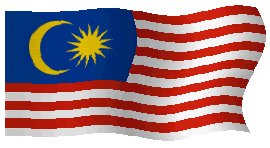This is a composite image of NGC 1068, one of the nearest and brightest galaxies containing a rapidly growing supermassive black hole. The X-ray images...
SEE AND HEAR MORSE CODE
ASTRA Malaysia
Saturday, March 6, 2010
Image Of The Day
This is a composite image of NGC 1068, one of the nearest and brightest galaxies containing a rapidly growing supermassive black hole. The X-ray images...
Alternative Energy Crops in Space
 Fruits of J. curcas. Fruits are produced terminally in the branches, and each fruit contains three seeds. Image credit: Dr. Wagner A Vendrame, University of Florida at HomesteadView large image
Fruits of J. curcas. Fruits are produced terminally in the branches, and each fruit contains three seeds. Image credit: Dr. Wagner A Vendrame, University of Florida at HomesteadView large image  Seeds of J. curcas. Seeds are pressed for oil extraction, which can be utilized as biofuel. Image credit: Dr. Wagner A Vendrame, University of Florida at Homestead View large image
Seeds of J. curcas. Seeds are pressed for oil extraction, which can be utilized as biofuel. Image credit: Dr. Wagner A Vendrame, University of Florida at Homestead View large image 
Fluid Processing Apparatus (FPA) containing cell suspensions of J. curcas. The FPAs will be assembled into the Group Activation Pack (GAP), which will be transported to the ISS for microgravity studies. Image credit: Dr. Wagner A Vendrame, University of Florida at Homestead View large image
What if space held the key to producing alternative energy crops on Earth? That's what researchers are hoping to find in a new experiment on the International Space Station. The experiment, National Lab Pathfinder-Cells 3, is aimed at learning whether microgravity can help jatropha curcas plant cells grow faster to produce biofuel, or renewable fuel derived from biological matter. Jatropha is known to produce high quality oil that can be converted into an alternative energy fuel, or biofuel. By studying the effects of microgravity on jatropha cells, researchers hope to accelerate the cultivation of the plant for commercial use by improving characteristics such as cell structure, growth and development. This is the first study to assess the effects of microgravity on cells of a biofuel plant. "As the search for alternate energy sources has become a top priority, the results from this study could add value for commercialization of a new product,” said Wagner Vendrame, principal investigator for the experiment at the University of Florida in Homestead. "Our goal is to verify if microgravity will induce any significant changes in the cells that could affect plant growth and development back on Earth." Launched on space shuttle Endeavour’s STS-130 mission in February, cell cultures of jatropha were sent to the space station in special flasks containing nutrients and vitamins. The cells will be exposed to microgravity until they return to Earth aboard space shuttle Discovery's STS-131 mission targeted for April. For comparison studies of how fast the cultures grow, a replicated set of samples are being maintained at the University of Florida's Tropical Research and Education Center in Homestead. "Watching the space shuttle go up carrying a little piece of my work is an indescribable experience," said Vendrame. "Knowing that my experiment could contribute to creating a sustainable means for biofuel production on Earth, and therefore making this a better world adds special value to the work."
by Lori Meggs, AI Signal Research, Inc. NASA's Marshall Space Flight Center
by Lori Meggs, AI Signal Research, Inc. NASA's Marshall Space Flight Center
Subscribe to:
Comments (Atom)
MyEQSLCard

eQSL Card (Recieved)

igq107 QSL Card







THE POSTCARD CROSSING PROJECT
ABOUT AMATEUR RADIO
Amateur radio service is defined in the Communication and Multimedia (Spectrum) Regulations 2000 as a radiocommunications service (covering both terrestrial and satellite) in which a station is used for the purpose of self traning, intercommunication and technical investigations carried out by authorized persons who are interested in radio technique solely with a personal aim and without any pecuniary interest.
AMATEUR RADIO OPERATOR'S CERTIFICATE
Regulation 27(1) of the Communications and Multimedia (Technical Standards) Regulations 2000 states that no person shall undertake or conduct any activity in designated skil area unless that person is certified. Amateur radio operator has been gazetted as a designated skill area category under the regulation, hence to operate an amateur radio station a person needs to have an appropriate proficiency and skill i.e. certified in this area.
INTERFERENCE
Please ensure that the radio transmision does not cause interference to any other radio services. Regulation 15(1) of the Communications and Multemedia (Technical Standards) Regulations 2000 states that no person shall intentionally design, install, operate, maintain or modify any communications equipment in a manner is likely to cause interference with, impairment, mulfunction of, or harm to any communications equipment or any other equipment.
Regulation 15(2) of the regulation denotes that a person who contravenes this regulation commits an offence and shall, on conviction, be liable to a fine not exceeding three hundred thousand ringgit (RM 300,000.00) or to imprisonment for a term of not exceeding three years or to both.
To eliminate the potential of interferences, the following procedures must be followed strictly:-
a) Ensure that suffient equipment, tools and test gear is available and can used to monitor and verify that your transmission does not cause any interference to other radio services.
b) You must responsible if your amateur radio is found to be the caused of interference. Immediate remedy action must be taken to rectify the problems in case of interference.
c) Ensure that the transmission do not exceed the level of over deviation.
d) Ensure that the radiated energy is always within the narrowest posible frequency bands for any class of emission in use.
e) The radiation of harmonics and spurious emissions should be suppressed to minimize interference.
Regulation 15(2) of the regulation denotes that a person who contravenes this regulation commits an offence and shall, on conviction, be liable to a fine not exceeding three hundred thousand ringgit (RM 300,000.00) or to imprisonment for a term of not exceeding three years or to both.
To eliminate the potential of interferences, the following procedures must be followed strictly:-
a) Ensure that suffient equipment, tools and test gear is available and can used to monitor and verify that your transmission does not cause any interference to other radio services.
b) You must responsible if your amateur radio is found to be the caused of interference. Immediate remedy action must be taken to rectify the problems in case of interference.
c) Ensure that the transmission do not exceed the level of over deviation.
d) Ensure that the radiated energy is always within the narrowest posible frequency bands for any class of emission in use.
e) The radiation of harmonics and spurious emissions should be suppressed to minimize interference.
Historical Description of Amateur Radio: From the Encyclopedia Britannica:-
Interest in amateur radio arose around the turn of the century, shortly after the Italian inventor Guglielmo Marconi successfully sent the first transatlantic wireless signal in 1901. The interference of amateur broadcasts with commercial and military transmissions led to the institution of government control in 1911. After World War I, amateurs became active in radio experimentation, contributing to developments in long-distance broadcasting and becoming the first radio operators successfully to exploit the upper medium-frequency and lower high-frequency radio bands. Over the years, amateur radio operators have also provided emergency communications during forest fires, floods, hurricanes, and other disasters. They serve as an important link between stricken communities and the outside world until normal communications are reestablished.Amateur radio operators in the United States are subject to international and federal regulations. There are five classes of licenses. Competence in the use of the International Morse Code and a knowledge of radio theory and regulation are required to obtain the advanced-level licenses. Amateur radio is allocated frequencies at the extreme high-frequency end of the medium-wave band, five groups of frequencies in the shortwave band, two groups in the veryhigh-frequency band, three in the ultrahigh-frequency band, and seven in the superhigh-frequency band for telegraphic and telephonic communication using amplitude and frequency modulation. There are restrictions on the power of the transmitters, and certain of the frequencies must be shared with due regard for the needs of other users.














































